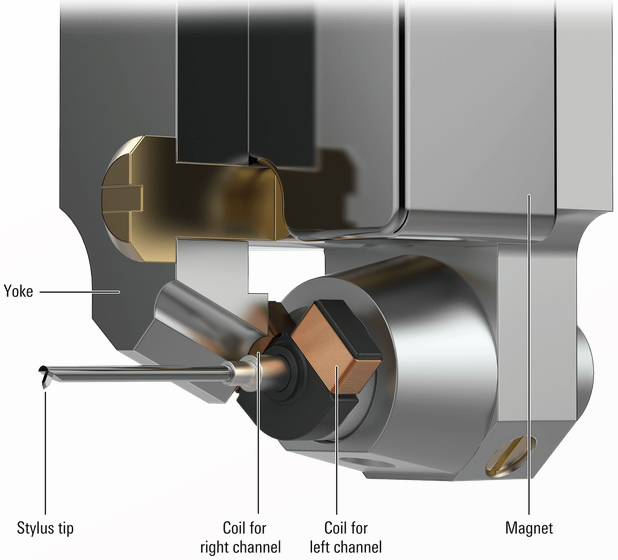STOW, OH, August 7th, 2020 Audio-Technica today announced the introduction of its AT-ART9XI and AT-ART9XA dual moving coil stereo phono cartridges, two high-performance models designed to deliver extraordinary sound quality and performance in the finest turntables. The AT-ART9XI is Audio-Technica’s new flagship magnetic-core moving coil cartridge, while the AT-ART9XA features a non-magnetic core construction.
Successor to the acclaimed AT-ART9, the AT-ART9XI (SRP: US$1,290) features dual moving coils aligned in an inverted V shape, which provides exceptional channel separation and imaging along with wide dynamic contrasts. The magnetic-core (iron core) cartridge employs a neodymium magnet and Permendur magnetic-alloy yoke, to optimize energy in the magnetic gap where the coils are located. This enables superior dynamic range and presence for vocals and instruments and yields an 0.5 mV output voltage. The coils are made from PCOCC (Pure Copper Ohno Continuous Cast) wire to preserve signal purity.
The AT-ART9XI has a specially-designed line contact stylus mounted on an 0.28 mm solid boron cantilever, for precise tracking and resolution of fine musical detail. The cartridge features a hybrid body made from a machined aluminum housing combined with high-rigidity polymer a configuration that ensures stable playback and minimizes unwanted resonances. The cartridge body has threaded screw holes that allow easy installation using only two mounting screws, with no mounting bolts required.
The Audio-Technica AT-ART9XA cartridge offers a host of improvements to the previous AT-ART7. Its non-magnetic-core (air core) design eliminates any magnetic distortion, allowing for a musically natural timbre along with exceptional soundstage realism and imaging. Although some non-magnetic-core cartridges can have weaker output voltages, the AT-ART9XA (SRP: US$1,290) has a newly-designed coil armature that provides an improved 0.2 mV output.
The AT-ART9XA utilizes a Shibata stylus mounted on an 0.28 mm solid boron cantilever, to deliver extraordinary musical detail and accurate tracking along with authoritative low frequency response. Like the AT-ART9XI, the AT-ART9XAs dual moving coils are aligned in a V shape for superior fidelity and the cartridge employs a neodymium magnet and Permendur yoke. Additional features include PCOCC coil wiring, a hybrid machined aluminum and high-rigidity plastic housing, threaded cartridge mounting holes and additional refinements.
The Audio-Technica AT-ART9XI dual and AT-ART9XA dual moving coil stereo phono cartridges are currently available.
Celebrating over 50 years of audio excellence, Audio-Technica is a recognized leader in the development and manufacture of high-quality personal and professional audio equipment. Founded in Japan in 1962 by Hideo Matsushita, the company made its name by manufacturing state-of-the-art phonograph cartridges and tonearms. Today, Audio-Technica is a worldwide group of companies devoted to creating high-performance microphones, headphones, wireless systems, mixers, turntables, phono cartridges and other electronic products.
A reputation for quality, durability, performance and value has made Audio-Technica products the first choice for many of today’s top musical artists and audio engineers, and for discerning listeners everywhere. Drawing from its audiophile heritage, Audio-Technica remains dedicated to providing music enthusiasts with great-sounding, innovative audio gear, including the award-winning QuietPoint active noise-cancelling headphones, popular ATH-M50x monitor headphones, versatile USB microphones, and new Hi-Res Audio headphones and high-fidelity gaming headsets. Learn more at www.audio-technica.com.
- (Page 1 of 1)







Absolutely impressive, no need to say more. I want the Shibata designed cartridge.
how do the 2 sound? what are the sonic advantages of the two types of construction?